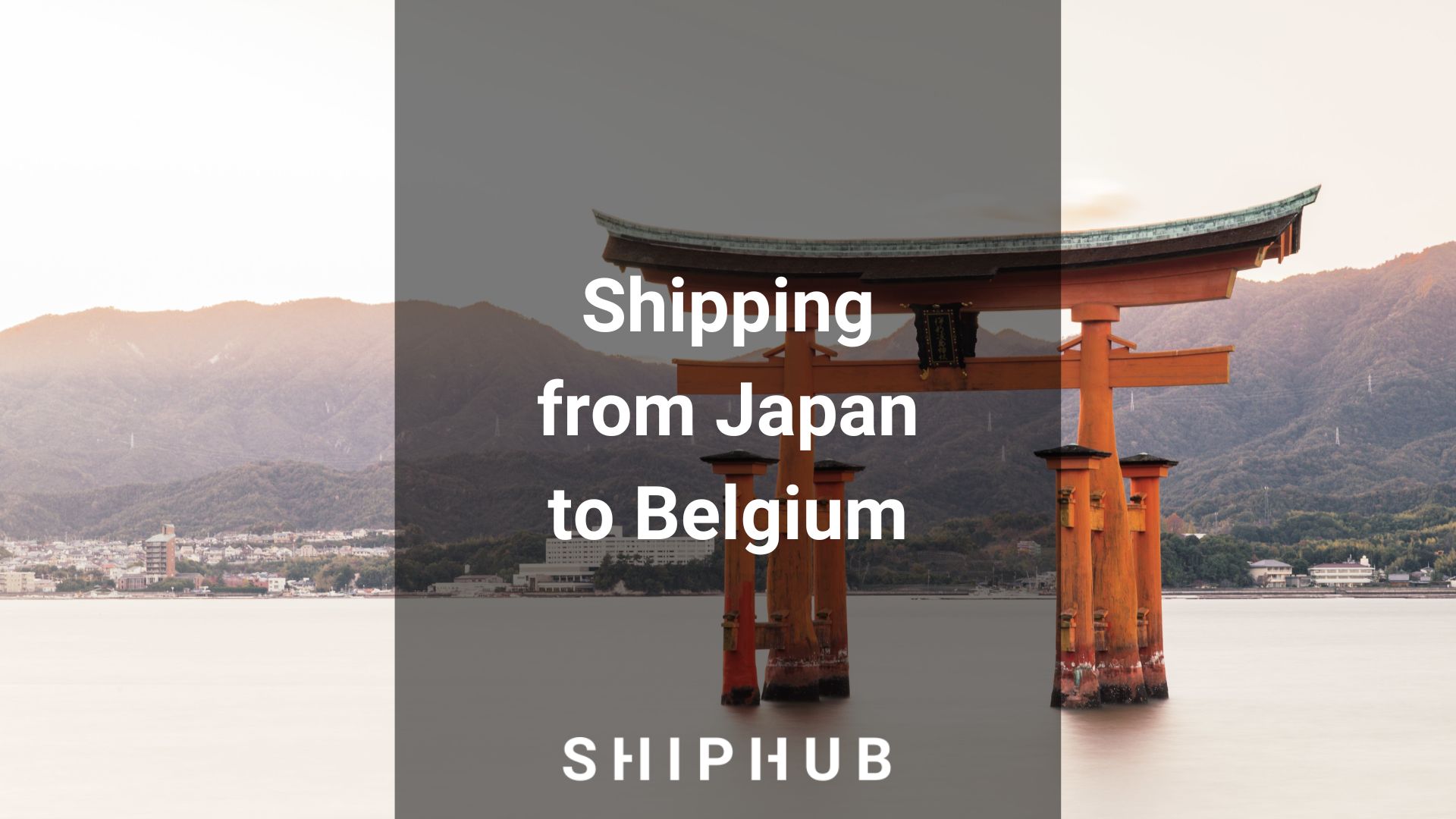Japan is one of the top export countries in the world (ranked 4th). The top exports of Japan are cars, machinery having individual functions, integrated circuits, motor vehicles (parts and accessories), and refined petroleum. The following article presents the possibilities of shipping from Japan to the EU, the USA, and Australia.
Shipping from Japan by sea
Seaports in Japan
There are over a thousand ports in Japan. The most important ones have connections with hubs in Asia, e.g., in Singapore. Cargoes are loaded in ports such as (categorized by islands):
- Hokkaido:
- Ishikari,
- Tomakomai.
- Honshu:
- Niigata,
- Kanazawa,
- Nagoya, one of Japan’s biggest and busiest ports (2,9 million TEU in 2018),
- Osaka, on three artificial islands,
- Kobe, before an earthquake, the busiest port in Japan,
- Hiroshima,
- Yokohama, one of the oldest ports in Japan,
- Tokyo, one of the Pacific Ocean’s biggest ports, with an annual turnover of 4,5 million TEU,
- Shimizu, close to the Mount Fuji,
- Toyama.
- Kyushu:
- Hakata, the oldest natural port in Japan,
- Moji.
Shipping from Japan to the EU by sea
When it comes to transporting heavy loads over long distances, sea transport is the best option. You can choose between LCL (less than container load) or FCL (full container load).
For example, the Danish carrier MAERSK offers transport from Yokohama via Rotterdam to Bremerhaven (Germany) in 43 days (AE1 – Westbound).
MSC, on the other hand, offers a Yokohama-Southampton / Felixstowe route (38/40 days).
CMA CGM offers service via JPX from Tokyo / Yokohama / Shimizu / Nagoya / Kobe to:
- FAL1: Southampton – Dunkerque – Hamburg – Rotterdam (47 days)
- FAL2: Rotterdam – Hamburg – Antwerp (42 days)
- FAL3: Algeciras – Le Havre – Rotterdam – Antwerp (40 days)
- FAL5: Felixstowe – Zeebrugge – Gdansk (42 days)
- FAL7: Antwerp – Hamburg – Rotterdam – Zeebrugge – Felixstowe (42 days)
- FAL8: Antwerp – Hamburg (42 days)
As well as service via KRUPUS:
- FAL1: Osaka → Southampton – Dunkerque – Hamburg – Rotterdam (48 days)
- FAL3: Hakata → Algeciras – Le Havre – Rotterdam – Antwerp (41 days)
- FAL5: Moji → Antwerp – Zeebrugge – Rotterdam – Gdansk (46 days)
- FAL8: Shimizu → Felixstowe – Hamburg – Rotterdam (48 days)
Hapag-Lloyd also offers routes from Japan to Europe.
The days shown are for sea transit only. You should add additional time for road transport from and to ports.
Be mindful that according to the Japanese Transport Law, 45 ‘containers are not accepted in sea transport.
Shipping from Japan to the US by sea
The most popular ports when it comes to shipping from Japan to the US are:
- Port of Los Angeles
- Port of Tacoma, Washington
- Port of Oakland, California
- Port of Savannah, Georgia
- Port of Newark
Transit time is about three to six weeks in some cases. A couple of examples:
- Yokohama – Oakland, 18 days
- Yokohama – Los Angeles, 16 days
- Kobe – Los Angeles, 14 days
- Kobe – Long Beach, 14 days
- Yokohama – Long Beach, 16 days
The Danish carrier MAERSK offers transport from Yokohama via Hakata to Dutch Harbor in Alaska in 16 days (TP Alaska Eastbound).
CMA CGM offers NWX (NORTHWEST EXPRESS) service to Tacoma (Wash.) from Tokyo (14 days) and Osaka (16 days). Via Fuji Service, cargo from Kobe, Nagoya or Tokyo reaches Los Angeles in about 15 days.
Shipping from Japan to Australia by sea
In terms of shipping from Japan to Australia by sea, services are available to the ports of Sydney, Brisbane/Fremantle, Adelaide, Melbourne, and Hobart. Estimated port-to-port shipping times from Yokohama or Tokyo for sea transport are as follows:
- Sydney: 24 days
- Melbourne: 25 days
- Brisbane/Fremantle: 30 to 37 days
- Hobart (via Melbourne) 30 to 39 days
- Adelaide: 30 to 40days
Examples of MAERSK routes from Japan to Oceania (Australia):
- Dragon: Yokohama → Osaka – Busan – Qingdao – Shanghai – Ningbo – Hong Kong – Sydney – Melbourne – Brisbane – Hong Kong (46 days in total)
- J Star OCE: Aomi Container Terminal → Kobe – Busan – Shanghai – Yantian – Hong Kong – Brisbane – Auckland – Lyttelton – Napier – Tauranga (31 days)
There is also a route of ANL, a wholly-owned subsidiary of the CMA CGM, A3N ANL: Yokohama → Osaka – Busan – Qingdao – Shanghai – Kaohsiung – Melbourne (11 days).
MSC provides Wallaby Service from Yokohama to Melbourne: Yokohama → Osaka – Busan – Qingdao – Shanghai – Ningbo – Brisbane – Sydney – Melbourne (25 days).
As you can see, vessels moor at ports in China and South Korea along the way.
Shipping from Japan by air
Air transport is not only fast but also relatively safe. However, it is also the most expensive method. The best option is to choose this method when transporting small quantities, valuable, or perishable goods. Transporting goods by cargo aircraft from Japan to Europe or the United States takes several hours, but the entire procedure may take a couple of days.
For example, LOT Cargo provides the Warsaw-Tokyo connection. Lufthansa Cargo has an extensive network between the EU, the US, and Japan.
When it comes to shipping to the US, the chosen destination airports are usually:
- Chicago O’Hare International Airport
- Los Angeles International Airport
- John F. Kennedy International Airport
- San Francisco International Airport, California
- Anchorage International Airport, Alaska
Shipping from Japan by air to other Asian countries and Oceania takes the shortest time. According to DHL Express, the estimated transit time from Japan to Australia is around 6 days. You can compare it with transit times to other countries/regions in that part of the globe:
- South Korea: 1.5 days
- Cambodia: 1.5 days
- Hong Kong: up to 2 days
- Malaysia: 2 days
- New Zealand: 4 days
- Taiwan: around 5 days
- Saudi Arabia: 5 days
- Philippines: 6 days
- Indonesia: 7 days
Multimodal shipping to the EU
Apart from the basic modes of transport, goods are also transported multimodally by rail, sea, or inland water.
In May 2018, a transport service from Japan to Europe via Dalian in China was launched. It is a transport solution that connects sea transport from Japan’s ports (Tokyo, Yokohama, Nagoya, Osaka, Kobe) to China. Then the cargo is transported by rail to terminals in Europe (Małaszewicze, Duisberg). Since then, more solutions have been available, such as EX Ocean-Solution China Land Bridge EJ (Europe-Japan) transporting goods from Europe to Japan.
Transport via the multimodal route by sea and rail modes of transportation on the Japan-Europe route takes 28 days, much shorter than only sea transport.
Alternatively, the cargo can also be transported by a cargo aircraft and a train. The cargo arrives in Chongqing, China, by air from Narita, Haneda, Chubu, or Kansai, Japan. The goods are then shipped by rail to Duisburg. In terms of FCL cargo, the transport time is 22 days, and for LCL – 23 days.
How much does shipping from Japan cost?
It is beneficial to compare different carriers’ rates for various modes of transport. On ShipHub, you can get a free quote for air, rail, and sea freight. Request a quote by filling out the form shown below.

Shipping from Japan – summary
We presented three modes of transport from Japan to other countries: sea, rail, and air. The choice of method depends on the size, weight, and quantity of the shipment, the chosen route, the expected delivery time, and other factors. The cargo can reach Europe in the span of a few days to several weeks. The transit time from Japan to the US also varies from a couple of days to six weeks. Shipping to Australia takes two days to three weeks on average.





